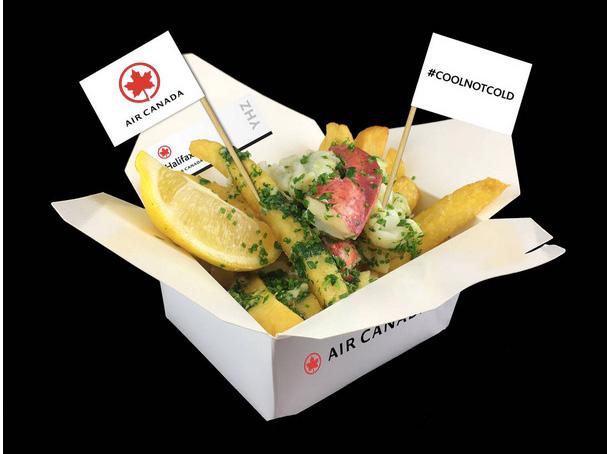
2 minute read
Air Canada-#CoolNotCold
AIR CANADA - #COOLNOTCOLD
#CoolnotCold is a campaign conceived by advertising agency JWT to inspire Brits to travel to the Americas this Winter - to “Cool” and not “Cold” destinations.
Advertisement

The core message is that Air Canada is not only a Canadian airline, it is a global carrier that will take you to destinations throughout North, Central and South America via its Toronto hub.
The integrated marketing campaign spans digital out-of-home, programmatic display, press inserts, digital lightboxes and banners and a pop-up Poutinerie in London’s Shoreditch district, which

appeared in November.
Inside the Poutinerie, visitors were able to sample dishes themed around ten Air Canada Americas destinations, from Halifax to Buenos Aires.
The pop up also allowed guest to virtually “take off” on an Air Canada flight through a virtual reality on-board experience at the Poutinerie and enter an Instagram and Twitter competition to win Air Canada flights, by tagging photos #CoolNotCold.
Tom O’Donnell, creative director at JWT Live, explained that the idea of a poutinerie was inspired by looking at trends as the cuisine has become “an underground food” sensation.
Meanwhile, Air Canada’s Andrew Edmonds said that “The #CoolNotCold campaign is part of Air Canada’s new push to challenge what UK travellers think about the Americas in winter. We want to encourage everyone to explore what these fantastic destinations have to offer all year round.”
Pop-ups and experiential events are now part and parcel of what most advertising agencies suggest to make campaigns go further. Some, such as Delta’s Tinder Wall, are so innovative that they turn out to be a great marketing investment due to the worldwide coverage.
For others, you have to wonder if the expense justifies the returns. For example, this year we have had pop-ups in London from American Airlines easyJet, Norwegian, Air New Zealand and Swiss - to name just a few.
Is it a “rewarding move” as Campaign suggests? For the agencies who suggest it certainly, but we’d always ask - who is going to see the campaign, and what else could that marketing spend buy?
In the case of Air Canada, the airline does seem to have done a blogger and social media outreach campaign to support the pop-up. For example, leading UK travel blogger Elle Croft was given a free meal at the Poutine and wrote a very positive piece about it.
KEY TAKE-AWAY

As brands such as Delta have shown, experiential events can work extremely well if they are innovative and creative. At other times however we suspect there is an element of ‘reach for the pop up’ by the marketing agency.
If you are going to do an experiential or pop-up campaign one of the key questions to ask is this: Who will this reach? Sure the pop-ups are branded and visible from the street but with the average American being exposed to up to 4,000 ads a day, these are easy to blank out.
Instead is there social media amplification so that many more people will see it? Or, as in the case of Delta, is the event so different that media worldwide will end up writing about it?










